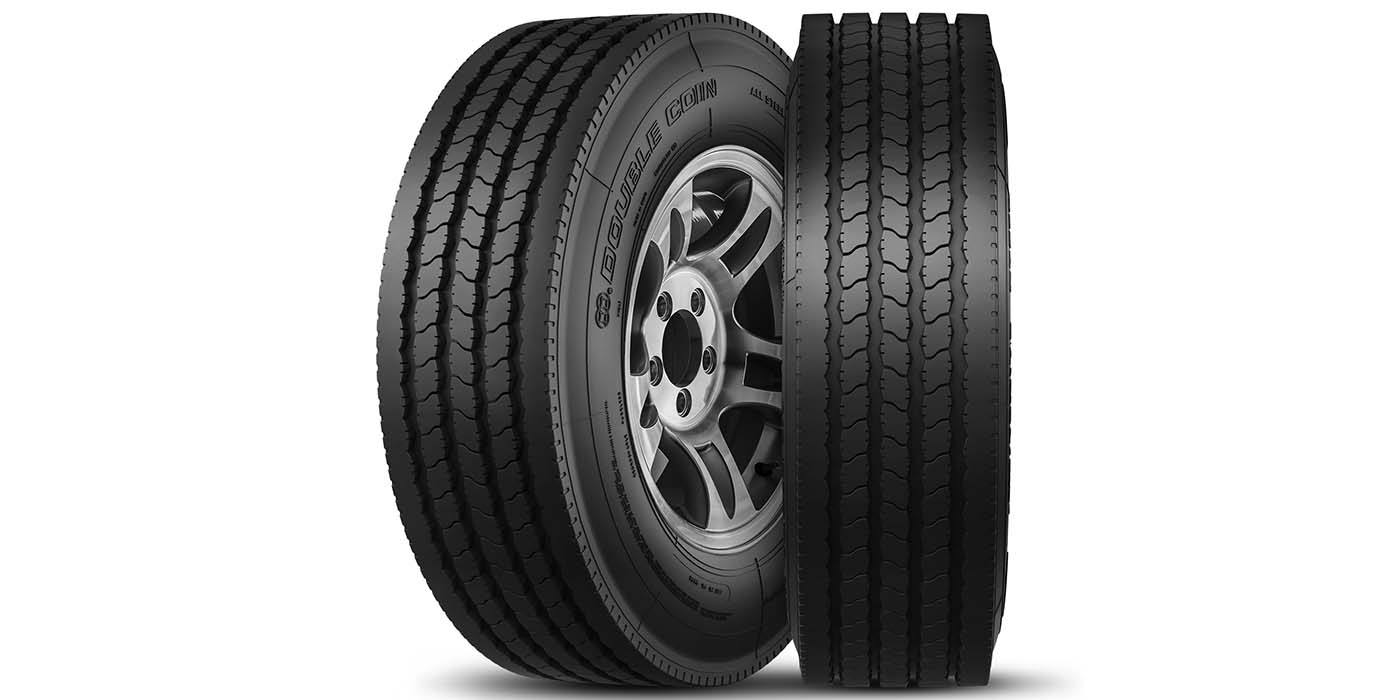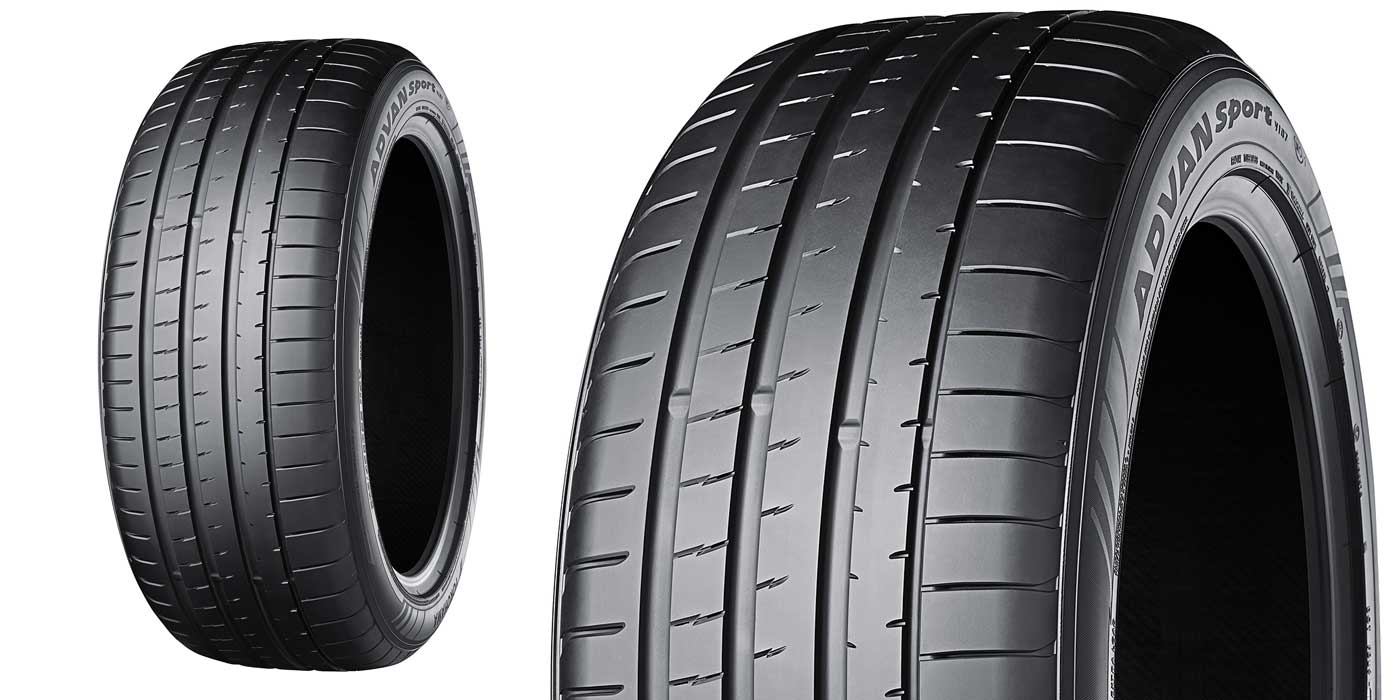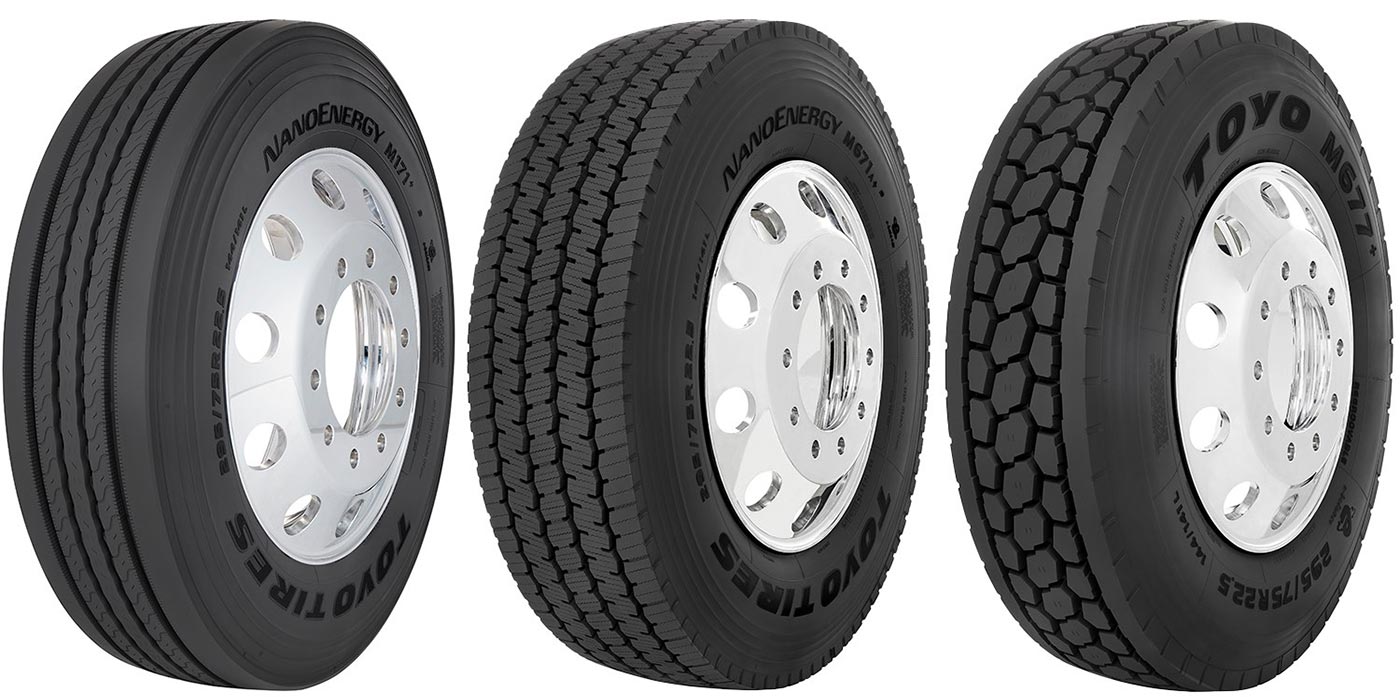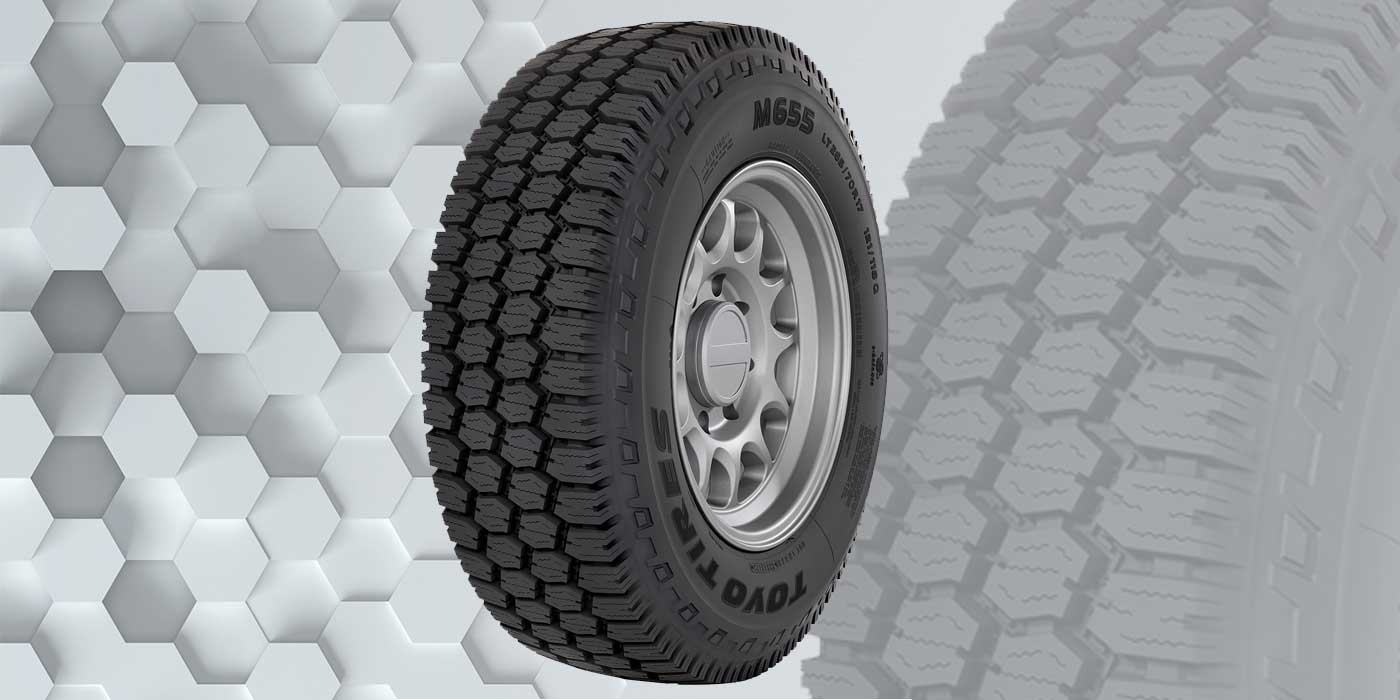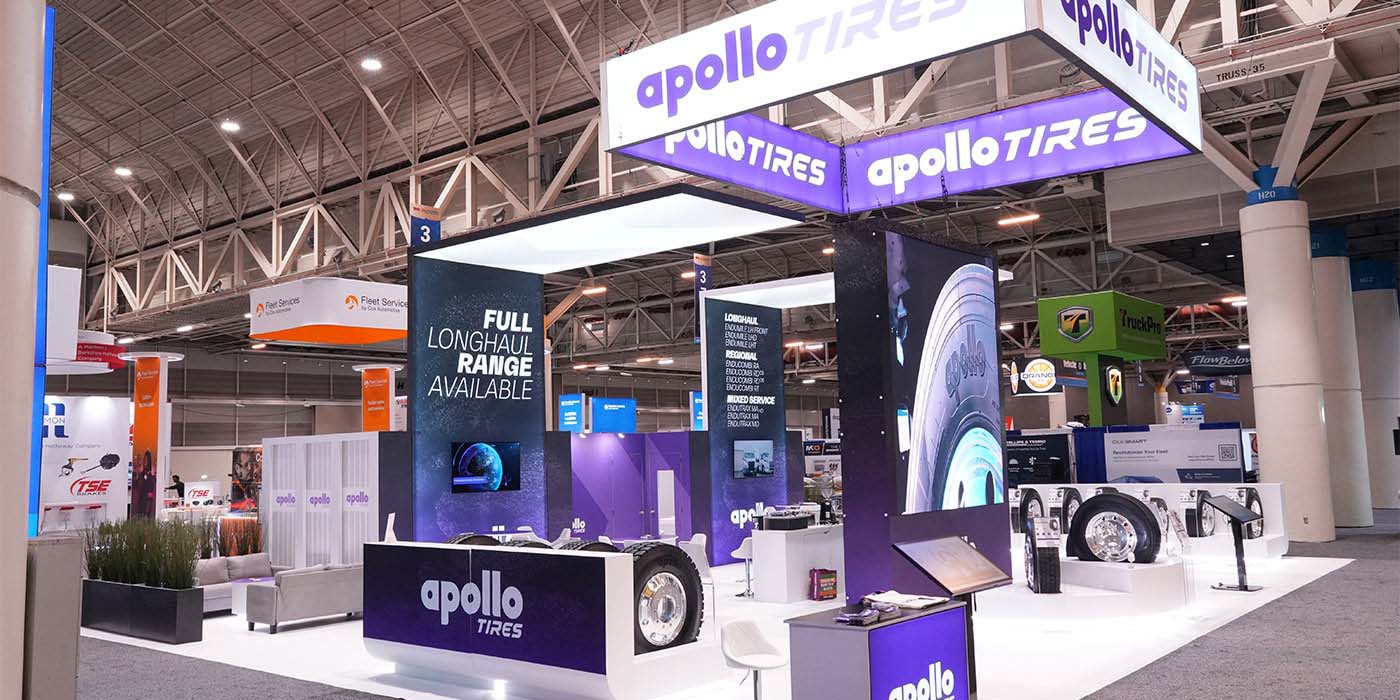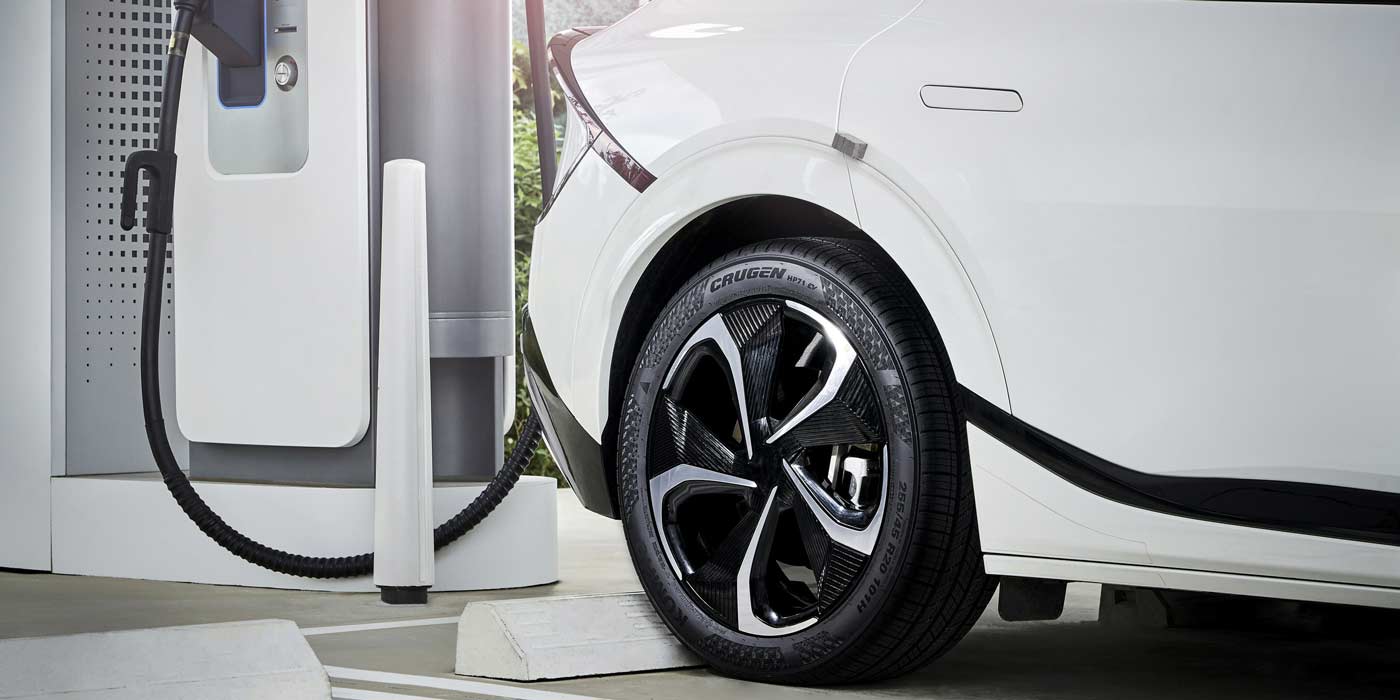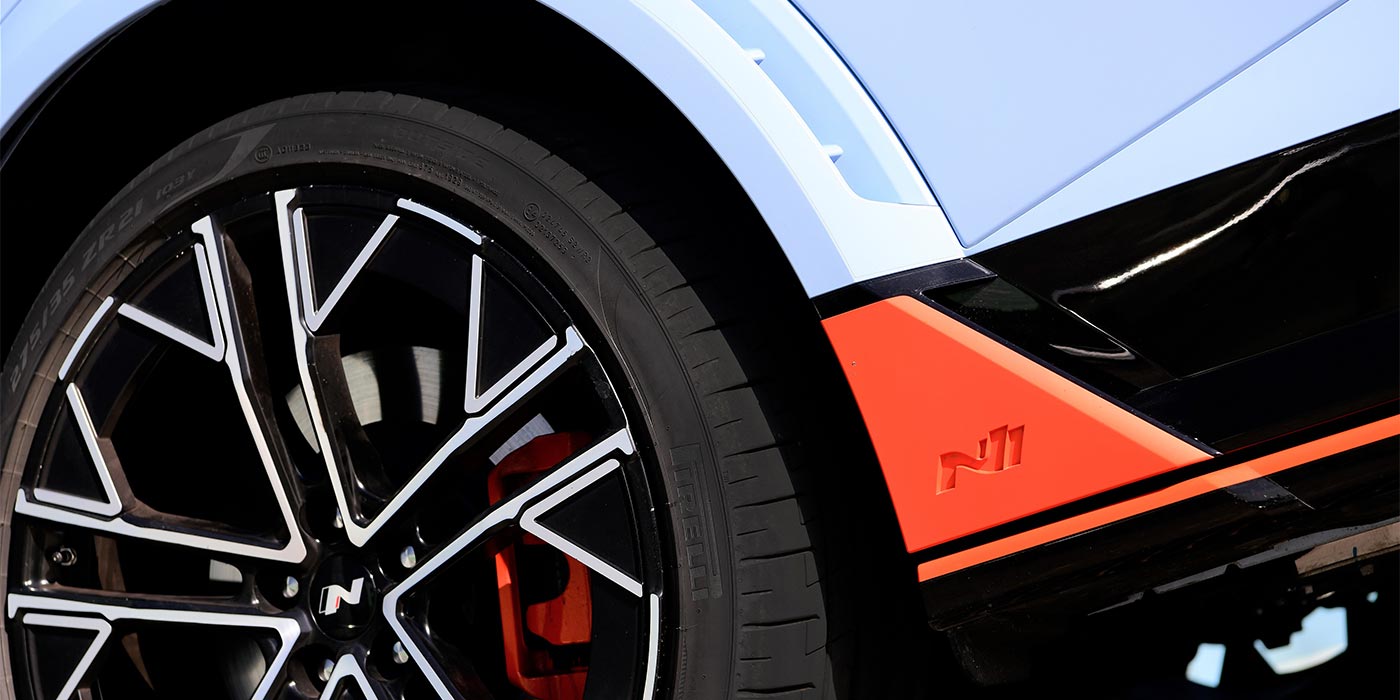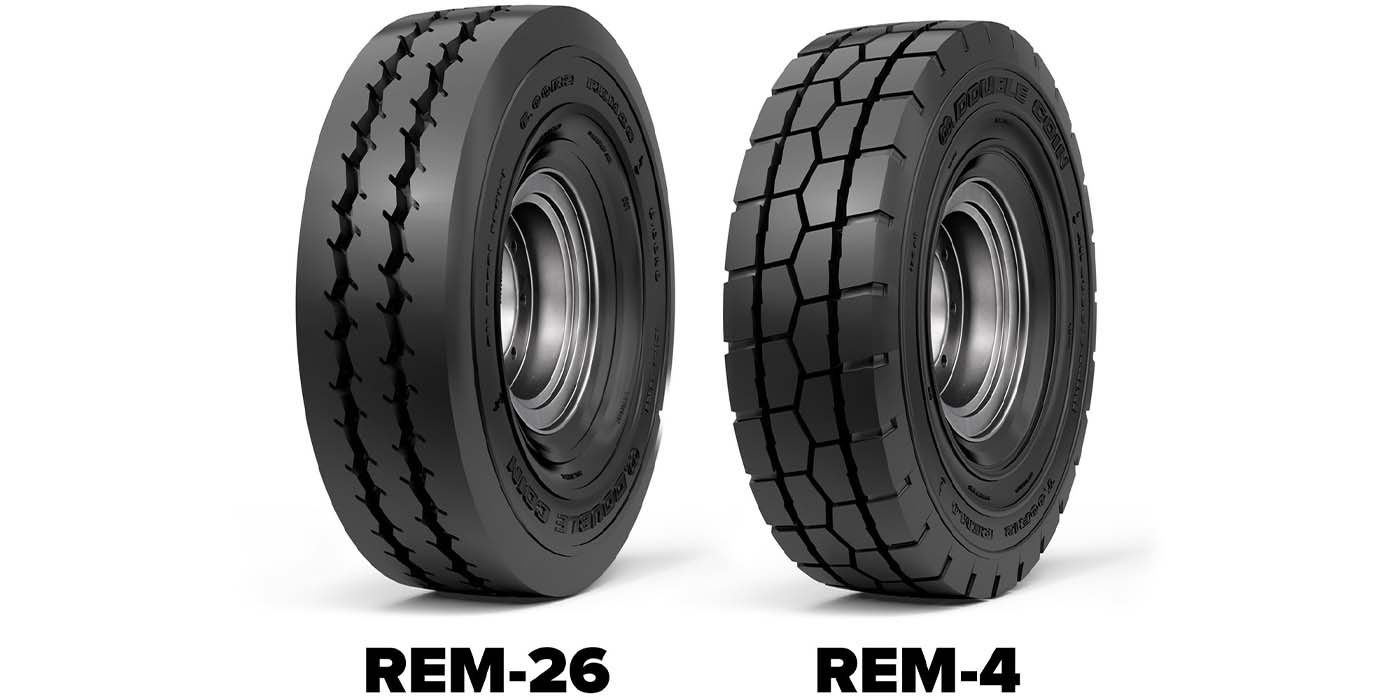Reviewing the state of the medium truck tire market in the spring of 2005 is enough to make a fortune teller reach for the Pepto. There is a record demand for tires, what appears to be a tightening supply of those tires (depending on who you ask), a continuing strong demand for Class 8 power units, and, in the U.S., more goods sitting around than there are rigs to tote them.
We know, too, that U.S. fleets are replacing aging power units at a record pace. Class 8 power unit sales through the first two months of 2005 jumped 52% vs. the same period in 2004. In some cases, truck OEMs are having a hard time keeping up with demand.
According to Tire Review estimates, roughly 5.3 million power units and some 12 to 15 million trailers are on U.S. highways. Strikingly, 89% of fleets have less than six power units. So, it’s the big outfits like Roadway-Yellow-USF that hold the buying power.
In Europe, the appetite for truck tires is greater than the tiremakers there can supply. In Latin America, where just 50% of the truck tire market is radialized, we know that the region is consuming most of its own production.
Of deeper concern is the fact that 98% of the medium truck tires being produced on a global basis are being sold as fast as they can be produced. Or maybe, just maybe, we shouldn’t be surprised or overly concerned.
After all, insiders in the commercial truck making business have known for a long time that there could be tightness in the supply of medium truck tires in 2005, just as they already know about the possibility of another tightening in 2007 and probably again in 2010.
That’s when additional EPA regulations for diesel engine emission control standards kick. All of us recall all of the scrambling that occurred a year before the last edict from the EPA became law in 2002.
Demand Takes Off
Everyone in the truck tire business has a good handle on the cyclical nature of the market. At least a pretty good grasp on things. When downturns occur, tiremakers cut production. But when the business cycle turns up again, it’s Katie bar the door.
In 2004, for example, new Class 8 truck builds were up 50% over 2003 numbers. But coming off of three straight down years, the tire industry had to ramp up fast. In 2002, the industry shipped just 3.86 million tires to OEMs, and 2003 saw a marginal increase to 4.16 million OE tires. But in 2004, OE tire shipments rocketed to 5.74 million.
Not only did tiremakers have to supply 16.29 million replacement medium truck tire units in 2004 – 790,000 more than the 15.5 million replacement units shipped in 2003 – they had to meet demand for approximately 5.74 million OE truck tire units, or 1.58 million more than in 2003.
Why the wild variations? “Because every economy in the world is growing,” said John Cooney, director of commercial sales for Yokohama Tire Corp.
That is as predictable as the pre-buying spree by fleet owners prior to every EPA engine emission change. Also predictable is power unit and trailer utilization. In 2003 and 2004, it was at an all-time high, helping to age the national truck fleet, which is said to be as used up as it has ever been.
Today, it can be difficult to find a carrier to haul what is expected to be a record tonnage year. Translation: There are not enough trucks to move product. Even then, fleets are raising their freight rates to make up for lost revenues in years past.
Fast Growth Ahead
Experts say big fleets are utilizing their equipment in the 85% to 86% range – a pretty high number, though some contend it is even higher – and have as many as 900,000 new power units on order right now.
Why not? Federal Reserve Chairman Alan Greenspan seems to be holding inflation pretty much in check, and consumer confidence is also good, although many are concerned about higher fuel rates. That means more freight to haul, more revenue and more money to invest in new equipment.
And the tiremakers support that proposition and see a busy future ahead.
“We don’t think consumer confidence will be shaken until fuel costs affect disposable income,” says Cooney. In the meantime, Yokohama will continue to supply its portion of production at the GTY facility in Mt. Vernon, Ill., to the market as well as import what it can from its Japanese tire plants.
“We expect to see OE demand for new truck tires rise a million units in 2005 over 2004, and another 500,000 units in 2006 compared to 2005. Even in 2007, the year the new emission control engines are introduced, we don’t see a disastrous year,” says Cooney. “At worst, we may see a retreat back to 2004 or 2005 numbers.”
Goodyear Tire & Rubber Co. agrees, even if its numbers vary slightly. “In 2005, we expect to see the OE market demand for truck tires grow by 16%, to 7.4 million units, a new record. We are forecasting a total of 27.3 million truck units shipped in 2005 when we combine the OE and replacement markets,” says Donn Kramer, director of marketing, commercial truck tires, for Goodyear’s North American Tire division. “That’s up from the 26 million OE and replacement market units shipped in 1999 – 1.3 million more tires.”
For now, the Goodyear executive says his company is meeting the demand for medium truck tires from its OE and replacement channel customers. But demand will remain high, and supply tightness will be a challenge for all tiremakers. After all, there is presently only so much capacity.
Inside the Numbers
Looking deeper into the numbers, Kramer says the difference between 1999 – when trucking companies were growing the overall size of their fleets – and 2005 is that, this time, fleets are replacing old equipment. “Truth is, they like the fact that there are more goods to haul than they have trucks,” he says, “and for good reason. Fleets traditionally operate at low margins and need to catch up.
“Unfortunately, the new engines due in 2007 will be less fuel efficient, will require more frequent maintenance intervals and the basic upfront investment in a power unit will be a little more,” he adds.
“Another costly investment for the fleets is the shortage of drivers. It costs a major fleet about $7,500 to train a driver,” says Kramer, “and the fleet is rewarded with a 100% turnover of drivers on an annualized basis. One way they might solve this problem is by upping driver wages,” he says, “but that won’t be the ultimate answer.”
The bottom line for Kramer is tied to industrial production, which he believes will be at or slightly above the GDP’s rate of change in 2005 and 2006. “When it’s slightly above, it’s a strong economic sign for the transportation market,” he says, “and we’re anticipating that to happen.”
Volatility as the Driver
Mike Barker, director of fleet OEM and business development sales for Continental Tire North America, called attention to the shrinking population of Class 8 trucks. “In 2000, there were 1.58 million Class 8s on the road, but in 2004, only 1.3 million as they grew old and were taken out of service. In other words, the OE truck market is volatile. The demand for new OE truck tires was up 38% in 2004 over 2003 but will be down 38% within two years,” he believes.
Barker also sees demand for medium truck replacement tires up just 1% over the next three or four years. “But, clearly, it’s the volatility of the OE market that’s driving the commercial truck tire market today. Already, some low-profile 22.5s are hard to come by at a time when the fleets are in buying mode.
“There are stories about new power units up on blocks waiting for all sorts of components, including tires,” he says. “Still, that won’t be enough to push tire companies to ramp up capacity because we know a downturn is coming in 2007.”
In the meantime, Barker’s advice to all commercial truck tire dealers is basic: “You can be backed up by all the technology that’s available out there to help you with fleet customers, but if you don’t walk the fleet, if you don’t address fleet needs – proper tire application, load ranges, tread designs and performance – you are not going to impress the yard manager.
“These people want and need to deal with professionals who are fair and honest. Give them every reason to trust you, and you’ll get the business.”
Globally and Locally
Hankook Tire America Corp.’s marketing director, Bill Bainbridge, says most tiremakers are now global in scope and will manufacture wherever they see fit and sell wherever it’s appropriate.
“Right now, let’s say demand is 150% globally – 50% in the U.S., 50% in Europe, and 50% in Asia. That is the challenge for all tiremakers. For the moment, demand exceeds supply, and any tire company that says otherwise is not being truthful.
“At Hankook, our medium truck tire focus is on the replacement channel only, not OE,” Bainbridge continues. “Even though we receive calls on a regular basis from the OE channel for tires, we are moving our distribution away from OE and wholesalers in favor of working directly with programming and servicing dealers.
“That’s how we believe we ought to be selling tires – by adding value to the brand through independent tire dealers,” he concludes. Working on an eight-year plan, which began in 2004, Bainbridge says Hankook expects to increase its ability to supply the U.S. medium truck tire market each year. “We believe 2005 and the years to follow will be great for new truck replacement sales.”
At Bridgestone/Firestone North American Tire (BFNAT), Kurt Danielson, director of marketing for commercial truck and bus tires, says the company is “not” experiencing any difficulties supplying its OE or replacement channel customers. “Yes, demand is outpacing production, but we are drawing on our global import/export ability to fill in where needed,” he says.
“If you look at the medium truck market from a macro perspective, it just keeps increasing in size. For that reason, we’ve been increasing our tire supply and will continue to balance it with sound inventory management. Right now, our fill rates are the highest in the industry, and we’re keeping all of our partners – tire dealers and fleets – well supplied.”
Danielson is confident that a $7 million expansion underway at the company’s Warren County, Tenn., plant will supplement medium truck tire capacity. “We are comfortable with where we are at this time,” he said.
Speaking to the question of imported no-name tires and any impact they may have, Danielson says, “those kinds of imported products don’t reinvest profit into research and development. A tire buyer can buy an inexpensive tire and get what he paid for, or he can buy a tire from us and get what he paid for.
“We track our tires, the fleets track our tires and, typically, the fleet knows what it wants to buy,” he says. “There really aren’t very many secrets out there. Our customers know which casings perform the best, and so do we. We also take that as a challenge to provide the customer with the right tire for the right job.”
Flattening the Curve
Marc Lafferriere, vice president of marketing for Michelin Americas Truck Tires (MATT), confirms the extreme growth in demand for medium truck tires at the OE level and predicts there will be a lot of stress on the supply chain for medium truck tires.
“That does not mean Michelin won’t honor its OE or replacement tire commitments, but it does mean we must continue our strong balance of capacity and supply. Two years ago, we determined that the ultimate challenge for us was to keep the end user happy. To do that, we planned for our production to keep pace with the needs of independent tire dealers and OE buyers.
“We are adding capacity in this country and bringing in imports from our factories around the world, as well,” Lafferriere says. “A few years ago, the replacement tire market would have suffered under such circumstances, but not now.”
Cycles Out of Sync
“As a global company, we have learned that volatile market swings, like the one occurring in the U.S. now, are common elsewhere in the world, as well. Fortunately, these global cycles are not in sync, and we are free to move product around to fill in where shortages would otherwise have occurred,” he says.
“When the current high demand in the U.S. subsides, we will reduce our import numbers,” continues Lafferriere. “In fact, we’d rather not import from Europe right now because the exchange rates don’t favor that. But, it does allow us to honor our commitments here and, in the long term, that will be to our advantage.”
From his office in Greenville, S.C., Lafferriere doesn’t believe the new truck emission changes coming in 2007 will be the end of the world for fleet customers. “Once again, we will see fleets doing some pre-buying in 2006 ahead of the next EPA deadline. In other words, we are seeing an artificially high demand for new power units at the moment, which will be followed by a sheer drop in 2007. The cycle will repeat itself going into the next EPA engine change in 2010.
“All of us in the tire business are hoping to find a way to flatten out the growth curve a bit. To do that, we have been involved in a more intimate sharing of forecasting information with fleets and truck builders. They have our forecasting information, as well. If we all know what’s coming, we can do a better job of preparing for it.”
On balance, Lafferriere doesn’t think 2005 OE medium truck tire shipments will be quite high as they were in 2004. Nevertheless, overall shipments will still be strong, he says. “Globally, we look at the North American (including the U.S., Canada and Mexico) tire market as one that will continue to grow.”
There is no doubt that the North American medium truck tire market is a fluid one, ebbing and flowing steps ahead of the economy. But, right now, it is flowing pretty heavily, and many dealers are struggling just to get tires for their customers.
It’s obvious that the major players disagree over whether there is a tire shortage or not. So, what is a tire dealer to do?
Always remember that downtime is a profit killer. A rolling customer is a happy customer, so having multiple tire options – particularly retreads, if possible – is a must.
Helping a fleet customer maximize its tire investment means proper tracking, recordkeeping and analysis. That same data can be used to plan tire utilization better, anticipate tire purchasing requirements and lower lifecycle costs.
And, there is always room for improvement in even the most stringent fleet tire maintenance program. Review what you are doing for your customers, and recommend ways to improve inspections – in the yard or on the road – to minimize underinflation.
After all, fleets don’t care how many tires are out there. They only care about the ones they own.

